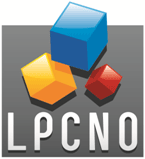QUANTUM-EMITTERS-EMBEDDED DIELECTRIC AND PLASMONIC LIGHT-EMITTING METASURFACES
NANOSCIENCE

Lab: LPCNO
Duration: NanoX master Internship (8 months part-time in-lab immersion)
5 months full-time internship
6 months full-time internship
Latest starting date: 01/11/2023
Localisation: The M2 student will be hosted by the Nanotech team of LPCNO and the NeO team of CEMES at Toulouse.
Supervisors:
Laurence RESSIER, Professor laurence.ressier@insa-toulouse.fr
Aurelien CUCHE, CNRS Researcher aurelien.cuche@cemes.fr
This research master's degree project could be followed by a PhD
Work package:
Introduction and context - In order to face the future challenges in communication and data processing, integrated optics and in particular nanophotonics offering deep integration at the nanoscale [1], is an appealing approach that might lead to disruptive technologies. Thus, the development of advanced integrated light-emitting optical components is mandatory to support this trend. An approach based on individual optically resonant nanostructures (‘nanoantennas’) has demonstrated the capability to control the emission of quantum emitters (QE) accurately positioned in their optical near field [2]. It has been extensively explored, notably by the partners (Fig 1(a)), unveiling the complex mechanisms of this coupling. Yet performances of QE-nanoantennas have reached a plateau as the number of degrees of freedom is limited. Our project provides therefore an original path for a breakthrough with the design, the fabrication and the characterization of complex plasmonic, dielectric or hybrid metal-dielectric light-emitting 2D metasurfaces for the control of accurately positioned QE.
Topic - The Q-META project aims to control and enhance the emission properties of quantum emitters (QE) with 2D optical metasurfaces, well beyond performances offered by the single nanoantennas at the state-of-the-art (Fig 1(a)). To do so, the nanosources of non-classical light will be accurately positioned in the near field of 2D plasmonic and dielectric arrays. The latter will be specifically designed to control the directivity, brightness, chirality, polarization of the QE emission via coupling to localized and collective resonances, in the visible/near infrared.
In this project, the quantum emitters will be colored centers in colloidal nanodiamonds, with typical diameters of few tens of nanometers [4]. NV centers will be preferentially used, but others colored centers available at CEMES will be considered too (collaboration with an academic partner). These different emitters will be systematically characterized by optical methods on operational time-resolved confocal microscopes at CEMES. Wavelength-dependent lifetime measurements and intensity correlation will be used to analyze their temporal dynamics.
The dielectric and plasmonic metasurfaces will be fabricated by ebeam lithography either on silicon on insulator (SOI) substrates for dielectric structures, thanks to an active collaboration with the LAAS laboratory at Toulouse, or on glass/ITO substrates at CEMES for plasmonic structures. Moreover, the geometry of these 2D metasurfaces will be optimized by the mean of electrodynamic simulations available at CEMES (Green dyadic method (GDM) coupled to an evolutionist optimization (eo) multi-objectives algorithm) [5].
The spatial and quantitative positioning of the fluorescent emitters in the 2D periodical structure of the metasurfaces will be performed by a directed assembly technique called AFM nanoxerography [6,7]. This technique has been developed in the Nanotech team of LPCNO. It relies on the local injection of electrostatically charged dots by the mean of a polarized AFM tip positioned above the areas of interest. These charged dots will act as selective electrostatic traps for the emitters. The two labs (CEMES and LPCNO) involved in that project recently demonstrated the deterministic and reproducible positioning of nanodiamonds on a flat SiO2/Si film (Fig 2) [8] and on single silicon nanoantennas (Fig 1(a)) [3].
Once the emitter-metasurface hybrid systems are done, the wavelength- and (dipole) orientation-dependent modification of the photodynamics of the emitters will be measured by 2D mapping of the time-resolved photoluminescence. The directivity and polarization control will be assessed by polarization-resolved back-focal plane imaging. These optical characterizations will be performed at CEMES on state-of-art time-resolved confocal microscopes. The experimental results will be systematically supported by GDM-based simulations.

References:
[1] AF. Koenderink et al. Science 348, 516 (2015)
[2] AF. Koenderink et al. ACS Photon 4, 710 (2017)
[3] M. Humbert et al. Nanoscale, 15, 599 (2023)
[4] M. Humbert et al. Phys. Rev. Applied 17, 014008 (2022)
[5] P. R. Wiecha et al. Nature Nano 12, 163 (2017)
[6] P. Moutet et al. Nanoscale 7, 2009-2022 (2015)
[7] N. M. Sangeetha et al. Nanoscale 5, 9587 (2013)
[8] M. Humbert et al. Nanotech. 33, 215301 (2022)
Areas of expertise:
quantum technologies, single photon sources, colored centers, nanodiamond, high-index dielectrics, plasmonics, metasurfaces, time-resolved optical microscopy, photon correlation, directed assembly, nanoxerography, Atomic Force Microscopy (AFM), numerical simulation of optical properties.
Required skills for the internship:
The candidate will be involved in the experimental aspects of (i) electrical and topographical modes of AFM, (ii) the process of directed assembly of the quantum emitters by nanoxerography, (iii) the optical characterization at the single photon scale (quantum regime), and to the theoretical aspects of (iv) the methods of electrodynamics simulation and of the design of the structures by eo algorithm. Autonomy, dynamism, scientific curiosity and rigor are the key words to carry out this project.
